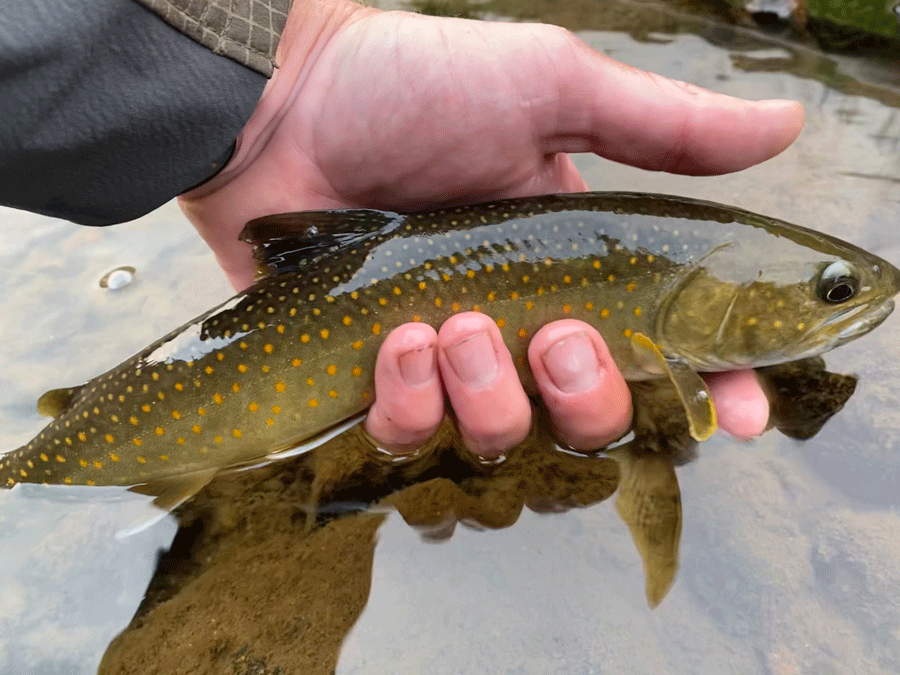
Bull Trout, Conservation, and the Value of Discretion
For Orvis News Blog - September 2021
During the course of our #WesternTroutChallenge series, I’ve spent a lot of time in great fly shops across the West.
While I do my best to make it a genuine give-and-take, I have to admit I generally walk away with a lot more than I can offer (generally only a few stickers, cold beer, and good stories).
Only once during this four-month long project have I been met with genuine resistance. It happened in a renowned fly shop in central Oregon. After introducing myself, I explained I was interested in pursuing and highlighting the famed bull trout population of the nearby Metolius River.
“The last thing we need is more a**holes here,” the gruff shop manager said. “I’ve been guiding here for twenty-five-plus years, and we’re seeing more people here than ever. People poaching bulls, using treble hooks and all sorts of other bulls***. I was taught to fish here by older generations that have trusted me to take care of this place. When people like you write stuff, it just draws the wrong crowd. I like to let things happen naturally.”
The Metolius is gorgeous, but didn’t produce the desired results. Photo: Daniel A. Ritz/ @Jacks_Experience_Trading
I listened quietly to this rant, as the man continued to unravel, talking about anglers not burying their poop and driving trucks into the river. His surprise was obvious when I reacted with empathy instead of defensiveness.
“I hear you. I appreciate your passion and your sense of stewardship for something that is very obviously important to you,” I said. “Not paying attention to regulations and abusing something is inexcusable.”
The problem is that people are coming. According to the Outdoor Foundation’s 2021 Special Report on Fishing, a shocking 54.7 million Americans fished at least once during 2020, the highest number recorded since participation tracking began in 2007. The fishing participation rate rose to 18% of the U.S. population, the highest rate in over a decade and a nearly 9% gain versus 2019. Complaining about the onslaught isn’t going to help, but we can make things slightly better if we offer these new anglers some insight and education.
As it turns out, I didn’t even write about my experience with bull trout on the Metolius. That’s because there weren’t any. Similarly, there wasn’t a bull-trout experience to share on the Salmon River or the South Fork of the Boise River on my return trip home.
Exasperated, I went into my local fly shop, Anglers Fly Shop in Boise, where I shared the successes of the Western Trout Challenge, as well as a few of my recent failures. Taking pity on me, one of the employees was kind enough to mention, in hushed tones, the bull trout population of what he called “the East Fork of the South Fork near Yellow Pine.”
The legacy of mining has had a profound effect on bull trout habitat. Photo: Daniel A. Ritz/ @Jacks_Experience_Trading
Instead of continuing to mine for more information, I decided to thank him, buy my flies, and immediately head home to begin my research. I’ve become fond of calling this level of sharing “just enough to be dangerous.”
I learned that the East Fork of the South Fork near Yellow Pine is not at all an unknown fork of the South Fork of the Boise River near Pine, Idaho, as I had naively suspected. Instead, I discovered a complex and intensely interesting fishery that had played a role in stories of devastating legacy resource extraction, international corporations, multi-agency management and multiple life cycles of bull trout.
One video I found particularly impactful featured a man walking around the rim of the now abandoned Yellow Pine mining pit, affectionately referred to by anglers as “The Glory Hole.” It’s now the end of the road for bull trout on the East Fork of the South Fork of the Salmon River because mining has disrupted fish passage upstream past that point.
“Normally, I don’t like spot-dropping, but, when it comes to naming a spot to bring awareness of the need to save this population, or having it disappear forever, I think it’s the right thing to do,” the man explained at the end of video. “A few more anglers to know what’s going might be exactly what we need.”
The East Fork of the South Fork of the Salmon is a stream more anglers should know about, so it can be restored.
A few short days after hearing of the East Fork of the South Fork of the Salmon River for the first time, I was standing at the outlet stream of the abandoned pit holding my very first bull trout. Weeks after that, I share that experience in hope anglers from Idaho and beyond familiarize themselves with a very much at-risk river and with a species more precious than the gold in the hills of their native homeland.
I’ve settled into a philosophy that just enough information to be dangerous is a healthy and happy medium. Discretion is key. Hint intentionally. Educate carefully. Maybe giving people just enough to be dangerous is the key to making the future just a little less so.
That, and a cold case of beer for fly shop employees. They have a lot more responsibility than we give them credit for.


